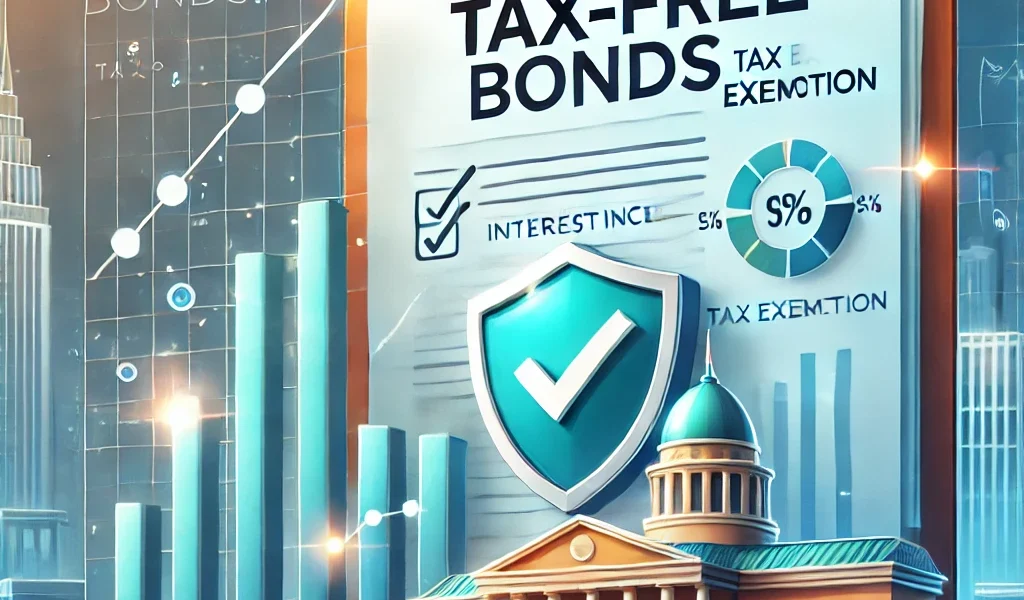Investors are always on the lookout for ways to maximize returns while minimizing tax burdens. Tax-free bonds are an attractive investment option for individuals seeking stable, long-term income without the worry of paying taxes on interest earnings. But are they the right choice for you? In this article, we’ll dive deep into tax-free bonds, their benefits, risks, and whether they are a smart investment.
What Are Tax-Free Bonds?
Tax-free bonds are debt securities issued by government entities, typically municipal authorities, to fund public projects such as infrastructure, schools, and transportation. The interest income earned from these bonds is exempt from federal taxes and, in some cases, state and local taxes, making them an appealing choice for high-income investors.
Who Issues Tax-Free Bonds?
- Municipal Governments: State and local governments issue these bonds to finance community projects.
- Government Agencies: Some federal and state agencies also issue tax-free bonds for specific purposes.
How Do Tax-Free Bonds Work?
When you invest in tax-free bonds, you lend money to the issuer for a fixed period. In return, you receive regular interest payments (coupon payments), which are not subject to federal income tax. Upon maturity, you receive your initial investment (principal) back.
Types of Tax-Free Bonds
1. Municipal Bonds (Munis)
Municipal bonds are the most common type of tax-free bonds issued by state and local governments to fund public projects. They are further classified into:
- General Obligation Bonds (GO Bonds): Backed by the issuer’s credit and taxing power.
- Revenue Bonds: Repaid through specific revenue sources like tolls, utility fees, or transit fares.
2. Tax-Free Infrastructure Bonds
These bonds are issued by governments to fund large-scale infrastructure projects. They typically offer long-term stability and are popular among conservative investors.
3. Zero-Coupon Municipal Bonds
Unlike regular municipal bonds, zero-coupon bonds do not pay periodic interest. Instead, they are issued at a discount and mature at full face value. The interest income, though tax-free, is paid as a lump sum at maturity.
Benefits of Investing in Tax-Free Bonds
1. Tax-Free Income
The primary advantage of tax-free bonds is that the interest earned is exempt from federal taxes and, in some cases, state and local taxes. This makes them particularly beneficial for high-income investors in high tax brackets.
2. Stable and Low-Risk Investment
Since tax-free bonds are issued by government entities, they are considered low-risk investments compared to corporate bonds or stocks.
3. Consistent and Predictable Returns
Investors receive regular interest payments, making these bonds a reliable source of passive income.
4. Ideal for Long-Term Investment
Tax-free bonds have long maturities, often ranging from 10 to 30 years, making them an excellent choice for those seeking stable, long-term returns.
5. Higher After-Tax Returns for High Earners
For investors in higher tax brackets, tax-free bonds can offer higher after-tax returns compared to taxable bonds with similar yields.
Risks of Investing in Tax-Free Bonds
1. Lower Yields Compared to Taxable Bonds
Since tax-free bonds offer tax advantages, their yields are typically lower than those of taxable corporate bonds or Treasury securities.
2. Interest Rate Risk
Like all fixed-income investments, tax-free bonds are sensitive to interest rate changes. When interest rates rise, bond prices fall, which could affect your investment’s market value.
3. Credit Risk
While municipal bonds are generally safe, there is still a risk of default if the issuing government faces financial difficulties. Checking the bond’s credit rating before investing is essential.
4. Liquidity Risk
Tax-free bonds may not be as liquid as other investments like stocks or mutual funds, meaning you might have difficulty selling them before maturity without incurring a loss.
Who Should Invest in Tax-Free Bonds?
1. High-Income Earners
If you are in a higher tax bracket, the tax-free nature of municipal bonds can enhance your overall returns.
2. Retirees and Income-Focused Investors
Tax-free bonds provide regular, predictable income, making them an excellent option for retirees looking for financial stability.
3. Conservative Investors Seeking Stability
If you prefer low-risk investments over high-return but volatile stocks, tax-free bonds can be a smart choice.
4. Long-Term Investors
Investors who are comfortable with long-term commitments and do not require liquidity can benefit from the stability of tax-free bonds.
How to Invest in Tax-Free Bonds
1. Direct Purchase
You can buy tax-free bonds directly from issuers through brokerage firms, bond dealers, or government bond auctions.
2. Municipal Bond Mutual Funds
Investing in a municipal bond mutual fund provides diversification and professional management while maintaining tax-free benefits.
3. Bond ETFs (Exchange-Traded Funds)
Bond ETFs offer liquidity and diversification while giving you exposure to a variety of tax-free bonds.
4. Robo-Advisors and Managed Accounts
Some robo-advisors and financial advisors offer tax-free bond portfolios tailored to your investment goals and risk tolerance.
Comparing Tax-Free Bonds with Other Investments
| Investment Type | Tax Treatment | Risk Level | Returns |
|---|---|---|---|
| Tax-Free Bonds | Interest is tax-free | Low | Moderate |
| Corporate Bonds | Fully taxable | Medium to High | Higher than tax-free bonds |
| Treasury Bonds | Federal tax applies but exempt from state/local taxes | Low | Moderate |
| Dividend Stocks | Taxable but with lower rates | Medium to High | Higher but volatile |
| Real Estate | Taxable, but deductions available | Medium | High |
Are Tax-Free Bonds a Smart Investment?
The decision to invest in tax-free bonds depends on your financial goals, tax situation, and risk tolerance. If you are a high-income earner looking for stable, tax-efficient income, tax-free bonds can be a smart investment choice. However, if you seek higher returns and can tolerate more risk, you might want to diversify your portfolio with other assets like stocks or corporate bonds.
Conclusion
Tax-free bonds offer a low-risk, tax-efficient investment opportunity for those seeking consistent income. While they may have lower yields compared to taxable bonds, the tax savings can make them an excellent choice for high-income investors, retirees, and conservative investors.
Before investing, consider factors such as credit ratings, interest rate trends, and liquidity needs. Diversifying your portfolio with a mix of bonds, stocks, and other assets can help you achieve a well-rounded investment strategy.




